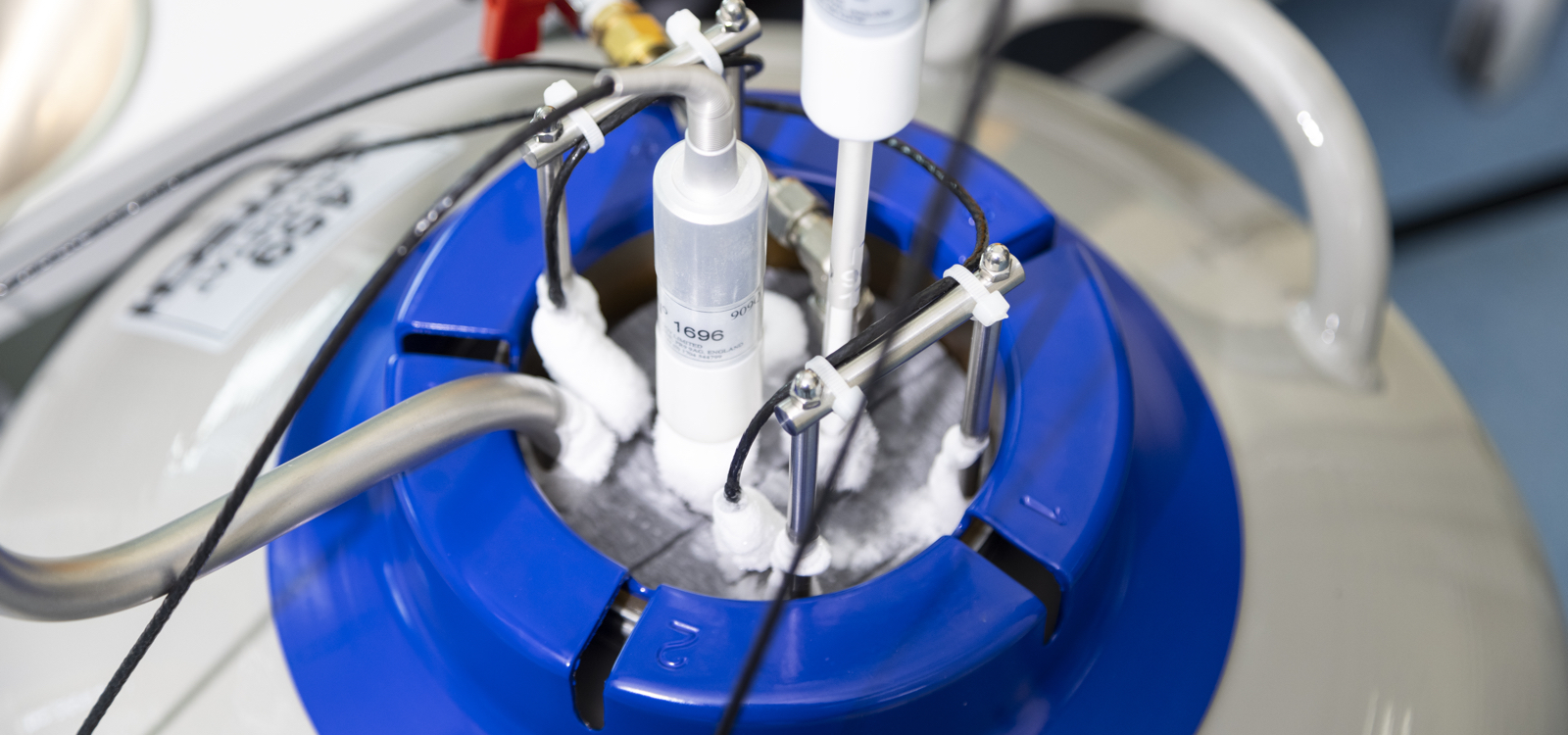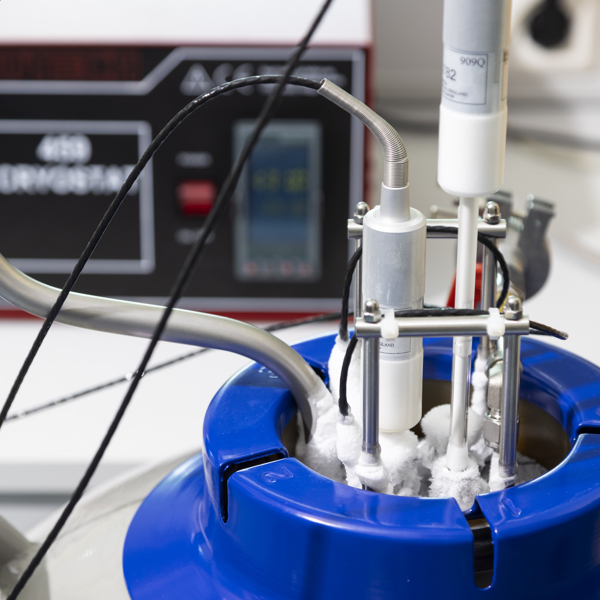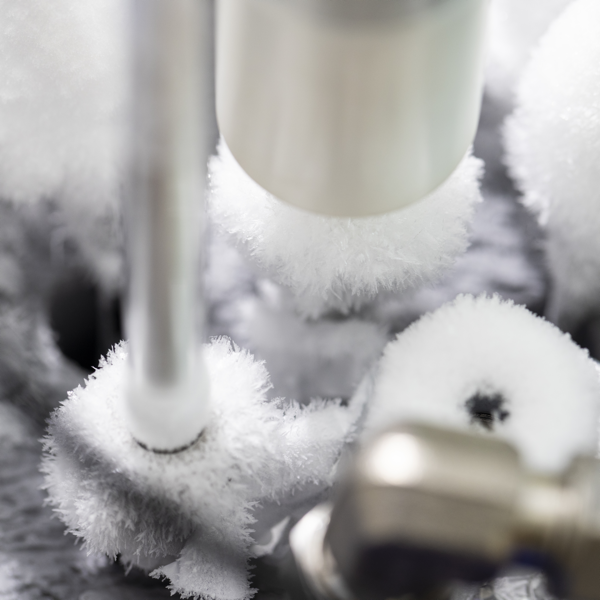
DAkkS Kalibrierung von Thermometern bei niedrigen Temperaturen
Sie wollen Thermometer bei extrem niedrigen Temperaturen kalibrieren? Der Temperaturbereich der verwendeten Kalibrierbäder und standardisierten Verfahren reicht Ihnen aber nicht aus? Dann sind Sie hier richtig. Wir verwenden siedenden Stickstoff um den Temperaturbereich zu erweitern.
Mit den hier gezeigten drei Kalibrierverfahren können Sie Thermometer im Temperaturbereich von -180 °C bis -80 °C und an den fixen Temperaturen bei -189 °C und -196 °C bei uns DAkkS kalibrieren lassen.

Kalibrierung bei niedrigen Temperaturen
Unser DAkkS-Angebot im Überblick
Ar
-189 °C
ITS-90 Kalibrierung
bis zum Tripelpunkt
von Argon
LN2
-196 °C
Thermometer Kalibrierung mit
flüssigem Stickstoff als Referenztemperatur
-180 °C bis -80 °C
Thermometer Kalibrierung mit
frei wählbaren Kalibrierpunkten im Stickstoff-Kryostaten

Mit dem siedenden Stickstoff können wir:
Thermoelemente und Widerstandsthermometer mit frei wählbaren Kalibriertemperaturen zwischen -180 °C und -80 °C im Stickstoff-Kryostaten DAkkS kalibrieren.
den Siedepunkt von Stickstoff nutzen und Thermometer bei -196 °C DAkkS kalibrieren.
den Argontripelpunkt bei -189,3442 °C in Betrieb nehmen und eine komplette ITS-90 DAkkS Kalibrierung im Temperaturbereich von -189 °C bis 0 °C durchführen.
Die verwendeten Fixpunkte sind:
Argontripelpunkt -189,3442 °C
Quecksilbertripelpunkt -38,8344 °C
Wassertripelpunkt 0,01 °C
Technischer Hintergrund
Die Kalibrierung von Thermometern bei extrem niedrigen Temperaturen ist eine technische Herausforderung. Konventionell werden bei der Kalibrierung von Thermometern im negativen Temperaturbereich Kalibrierbäder oder Temperatur-Blockkalibratoren eingesetzt. Diese kommen jedoch beim Kühlen schnell an Ihre Grenzen und werden nur bis ca. -80 °C eingesetzt.
Kalibrierbäder werden mit Kompressoren gekühlt. Zur stabilen Regelung der Kalibriertemperatur arbeitet eine elektrische Heizung „gegen“ den Kompressor, der immer mit maximaler Leistung kühlt. Zudem verändern die eingesetzten Kalibriermedien (wie z. B. Silikon oder Ethanol) ihre Viskosität sehr stark und nehmen Wasser aus der Umgebungsfeuchte auf. Beides erschwert die Temperatur-Regelung der Kalibrierbäder. Die niedrigste Temperatur, die Kalibrierbäder mit einer stabilen Regelung erreichen, liegt bei ca. -80 °C.
Temperatur-Blockkalibratoren werden mit Peltier-Elementen oder Sterling-Motoren gekühlt. Diese Technologien sind limitiert und können bis ca. -50 °C mit Peltier-Elementen bzw. -100 °C mit Sterling-Motoren eingesetzt werden.
Um diese Einschränkungen zu überwinden, verwenden wir flüssigen Stickstoff als „Kältequelle“. Das versetzt uns in die Lage, den Temperaturbereich beim Kalibrieren von Thermometern auf bis zu -196 °C erweitern zu können.


Digitalarchiv Klasmeier Cloud:
Kalibrierdokumente schnell und unkompliziert abrufbar
Die Klasmeier Cloud – das perfekte Ablagesystem für alle Kalibrierdokumente. Auf allen von Klasmeier kalibrierten Geräten finden Sie einen QR-Code, mit dem Sie schnell und unkompliziert in unser digitales Archiv gelangen.
Besonders praktisch: Neben allen Kalibrierdokumenten gibt es dort auch immer gleich die Kontaktdaten des jeweiligen Ansprechpartners bei Klasmeier dazu. So finden Sie auch noch in fünf oder mehr Jahren bei Fragen zu ihrem Kalibrierprodukt mit einem Klick die gewünschten Informationen.
Gemeinsam die richtige Lösung für Sie finden

Sprechen Sie direkt mit unserem Experten!
Ihr Ansprechpartner für Kalibrierdienstleistungen:
Boris Kalb
b.kalb@klasmeier.com
+49 661380 940-0




